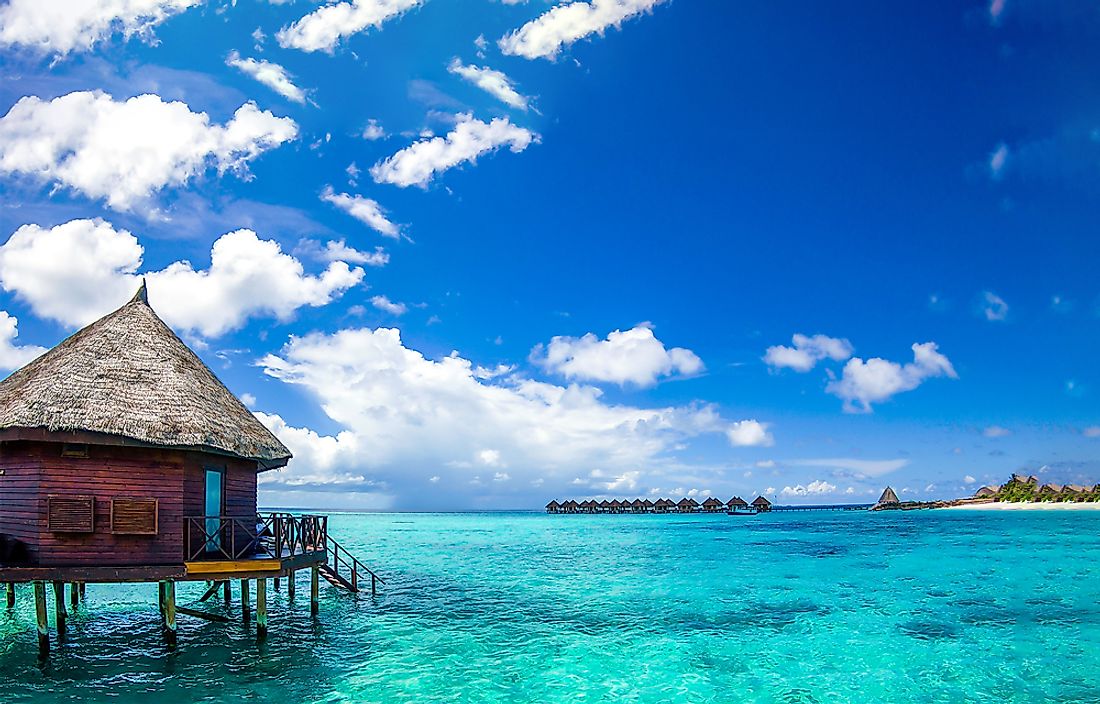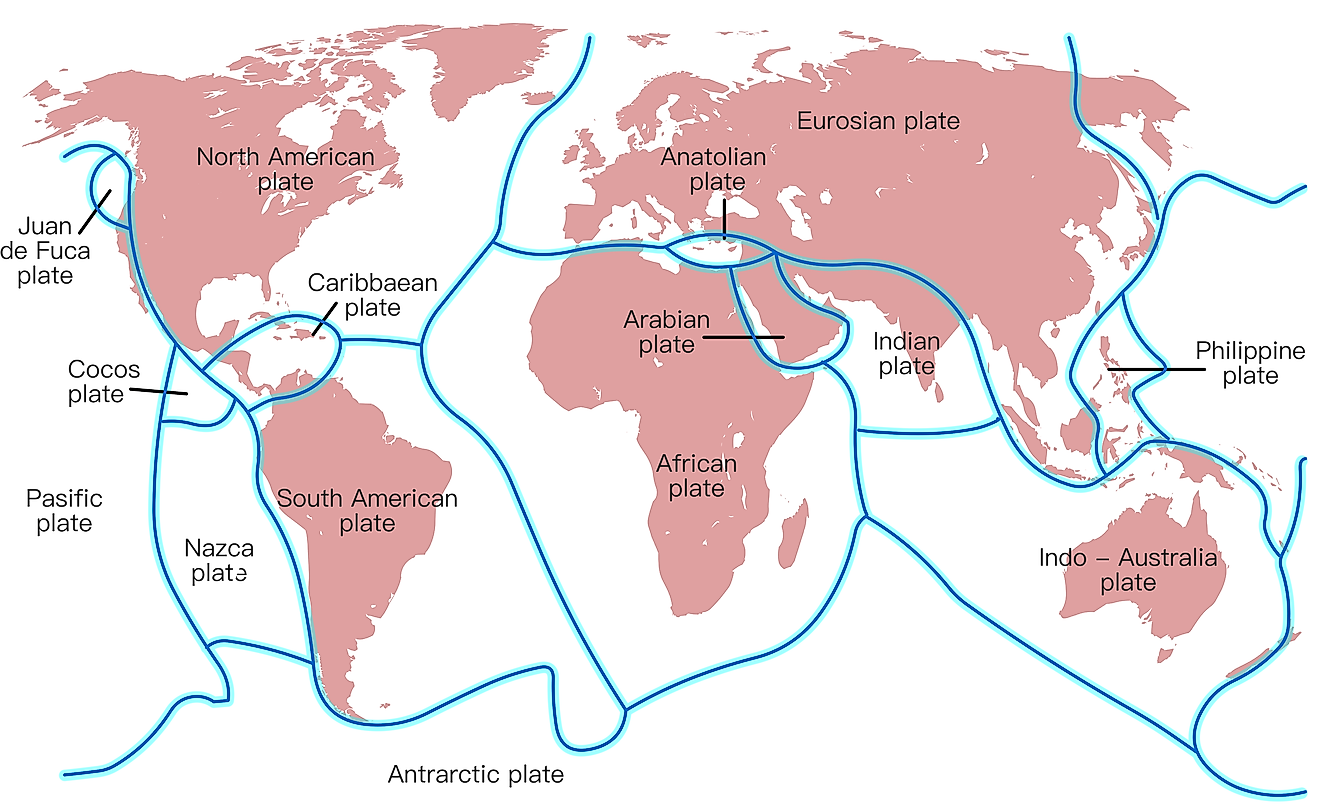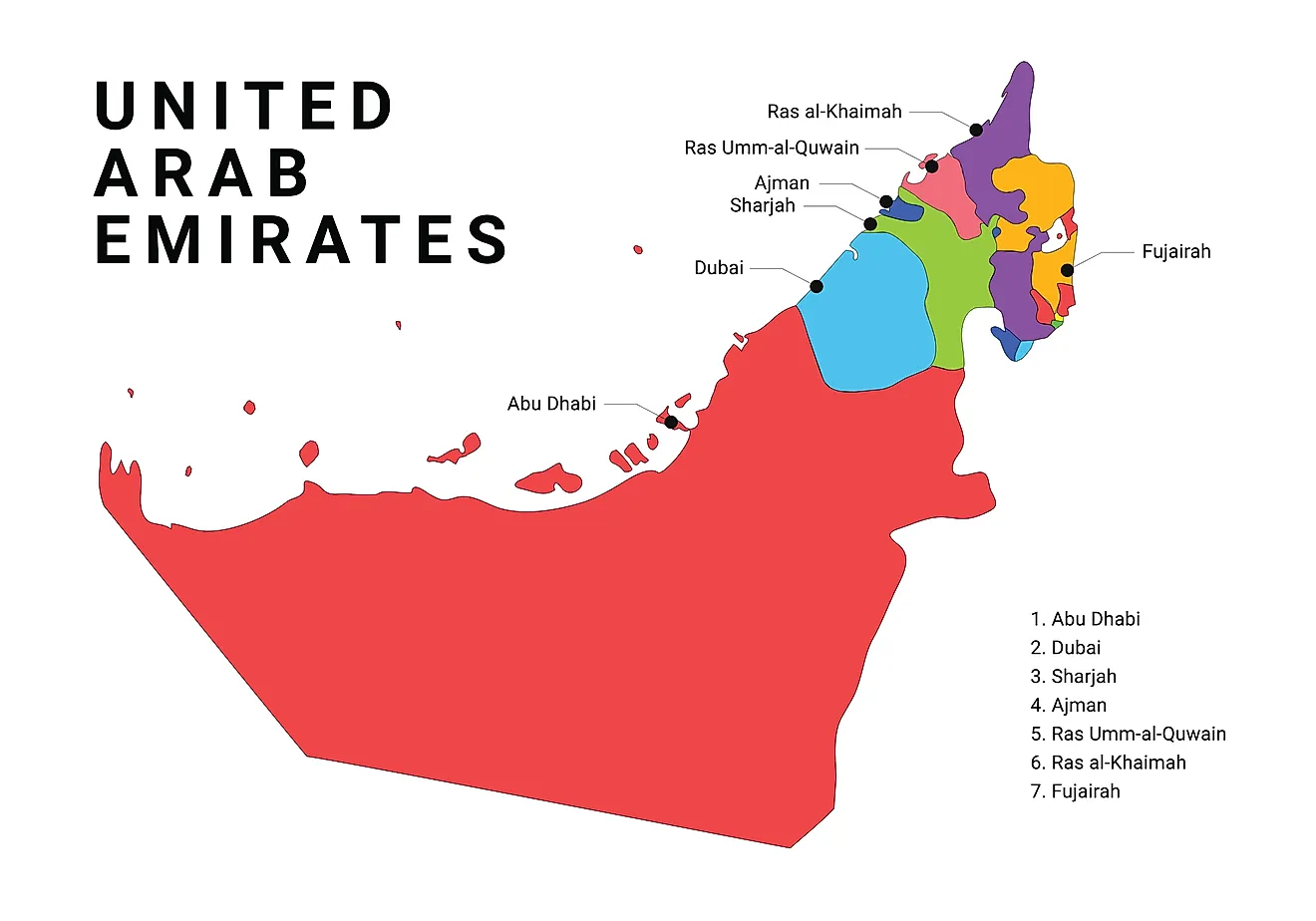Berlin Wall
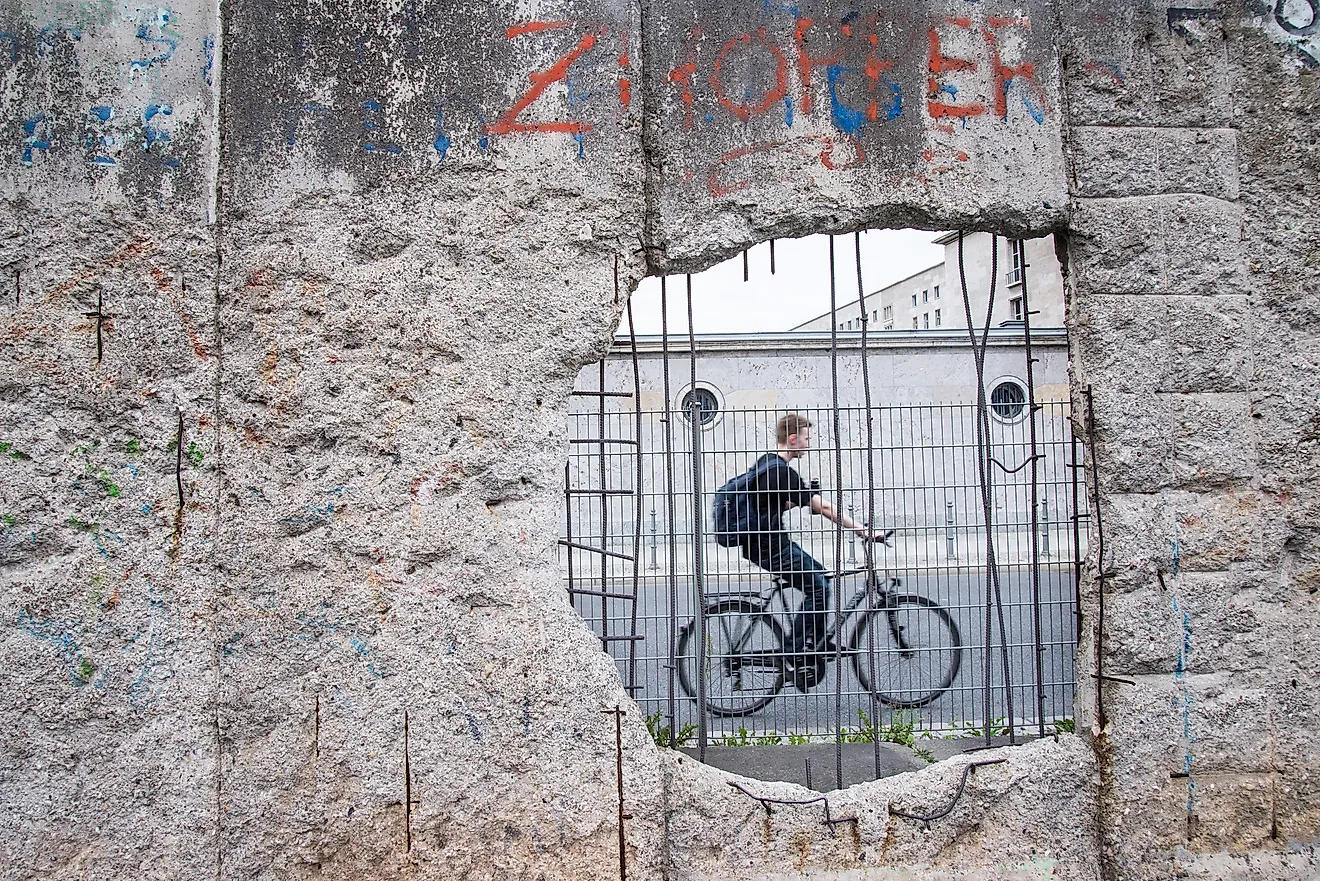
- The Berlin Wall was built in Berlin, Germany in 1961.
- The Berlin Wall was built by the East Germans to prevent people in East Berlin from crossing into West Berlin.
- Between 1961 and 1988, more than 600 people died trying to cross the Berlin Wall from East Berlin into West Berlin.
- The Berlin Wall was torn down in 1989, after the East German government allowed its people to cross the border into West Berlin freely.
- The fall of the Berlin Wall marked the symbolic end of the Iron Curtain and the Cold War.
There is arguably nothing that symbolized the Iron Curtain and the Cold War better than the Berlin Wall. After World War II, Europe was divided between the capitalist, democratic West and the communist east, by what British Prime Minister Winston Churchill called the Iron Curtain. The Western powers and the Soviet Union, who were once allies in their fight against Hitler and Nazi Germany, became bitter rivals, and would remain so until late into the 20th century. The building of the Berlin Wall did not mark the beginning of the Iron Curtain or the Cold War, but the fall of the Berlin Wall certainly marked the end of both.
Historical Background
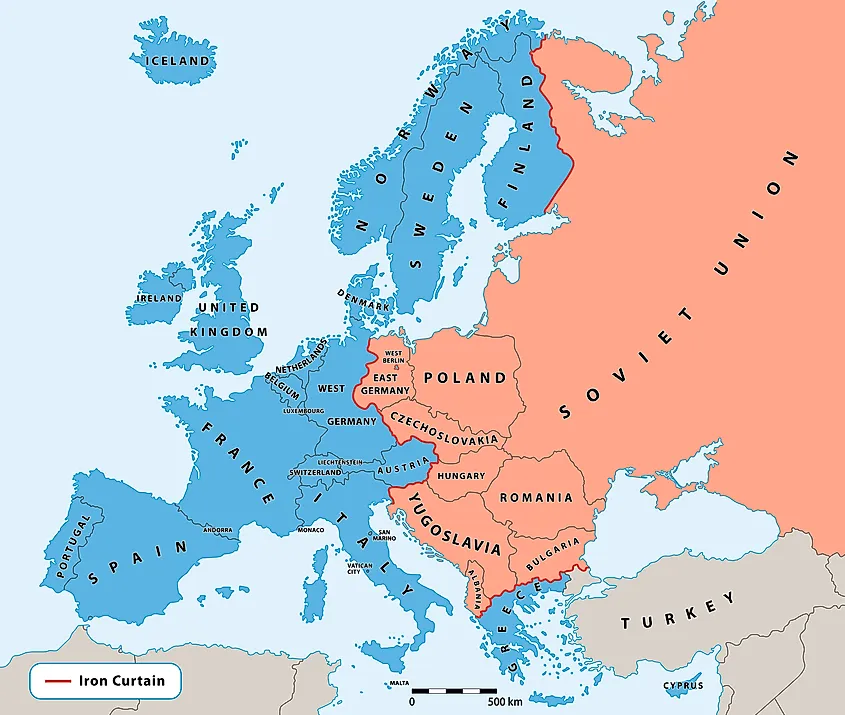
After World War II, Germany was partitioned into occupied zones. The Western powers, the US, UK, and France, controlled western Germany, while the Soviet Union controlled the east. Berlin, the German capital, though situated deep in the Soviet-controlled occupied zone, was also partitioned between the victorious Allied Powers. The Western powers controlled the western part of the city, and the Soviets controlled the east. But the fact that there was an enclave of capitalism located in the middle of Soviet-controlled territory annoyed the Soviets. They wanted to control the entire city. Thus, in 1948, the Soviets blockaded West Berlin to try and starve the Western powers out of that part of the city. In response, the Western powers airlifted food and other supplies into West Berlin for about a year in what was known as the Berlin Airlift. Their efforts all for naught, the Soviets abandoned their blockade in 1949. In the same year, the zones in Germany that were controlled by the Western powers united to form the Federal Republic of Germany. In the eastern, Soviet-controlled zone, the communist German Democratic Republic, was formed. These two states would come to be known as West Germany and East Germany respectively.
In the decade that followed the Berlin Blockade, millions of refugees, many of them well-educated professionals, such as doctors, teachers, and engineers, left East Germany for the West using the divided city of Berlin as a conduit. The Soviets sought to stop this mass emigration. Hence, in 1961, the Soviets had the East Germans close the border in the former German capital. Within the space of two weeks, the East Germans had built a makeshift wall on the border between West Berlin and East Berlin, comprised of barbed-wire and concrete blocks. This wall would come to be known as the Berlin Wall.
A Divided Berlin
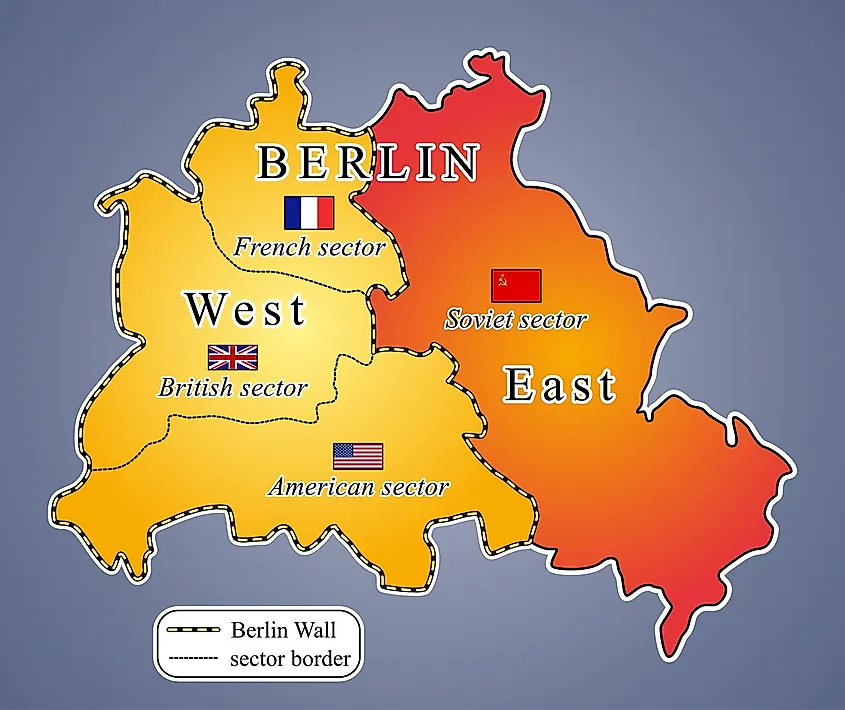
Whereas Berlin was only politically divided between 1945 and 1961, the Berlin Wall made it physically divided. Before it was built, people in all parts of Berlin could travel the entire city freely. After the Berlin Wall was built, however, almost no one could cross from east to west or vice versa. The presence of the wall meant that the people of Berlin were divided, and would stay divided for nearly 30 years.
The only way to traverse the two sides of Berlin was through 3 checkpoints: Helmstedt, Dreilinden, and Friedrichstrasse. These were colloquially known by the Americans as Checkpoint Alpha, Checkpoint Bravo, and Checkpoint Charlie respectively. The East Germans eventually built 12 additional checkpoints. It was at these checkpoints where East German soldiers screened diplomats and other officials before they could enter or leave East Germany. For ordinary citizens, however, it was almost impossible to get across.
Some citizens from East Berlin did try to cross the border, but at great risk. One person who attempted to cross was a woman named Ida Siekmann. When the Berlin Wall was being built, she found herself trapped on the eastern side. But West Berlin was just on the sidewalk, adjacent to her apartment building’s entrance. In a desperate attempt to cross, Siekmann threw her bedding and possessions out of her window onto the sidewalk in West Berlin territory, and then jumped out. Tragically, she succumbed to her injuries on the way to the hospital, thus becoming the first fatality of the Berlin Wall. Other people on the eastern side of the Berlin Wall would try to escape in ways similar to what Siekmann attempted, using buildings with doors, windows, and roofs adjacent to West Berlin to try and cross the border. In some cases West German emergency personnel would stand by on their side of the wall to try and help. Eventually, however, East German authorities sealed off buildings adjacent to West Berlin, and forced the residents therein to move.
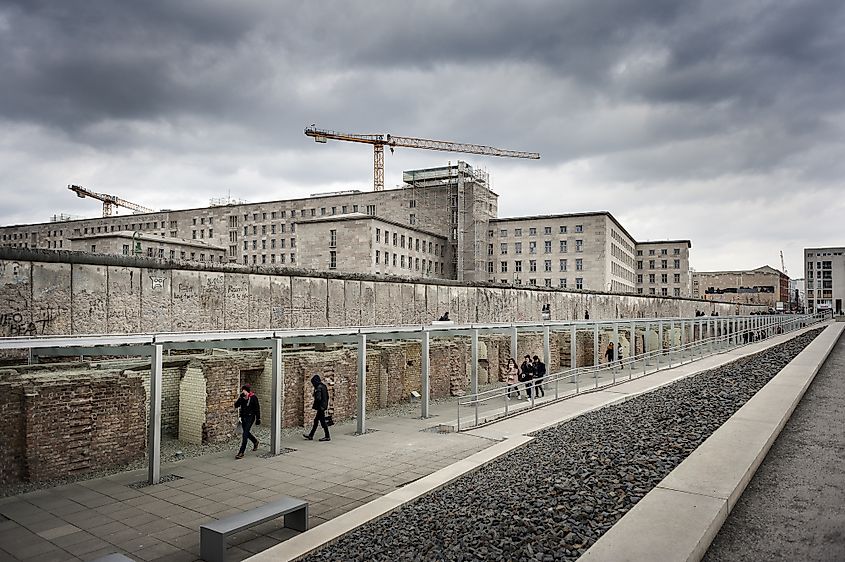
In order to try to stop people from attempting to traverse the newly-built Berlin Wall from east to west, the East Germans built a more permanent structure that actually consisted of two walls. In between these walls was a no-man’s-land, which came to be known as the “death strip”. Along the wall were a string of other security measures designed to deter people from attempting to cross, including land mines, attack dogs, and barbed wire. The wall was also regularly patrolled by East German soldiers, who were ready to shoot and kill anyone trying to escape East Berlin. These additional measures deterred most people in East Berlin from trying to cross into West Berlin. Nevertheless, there were still some who wanted to cross, no matter the cost. Some did escape, but others were not so lucky. In fact, between 1961 and 1988, more than 600 people died trying to make the perilous crossing between East and West Berlin.
Fall Of The Berlin Wall
By 1989, communism in Eastern Europe was crumbling. On November 9th of that year, a spokesman for East Germany’s Communist Party announced that as of midnight, people in East Berlin could freely cross into West Berlin. Upon hearing this, crowds of people showed up at the checkpoints on the eastern side of the Berlin Wall. That weekend, more than two million people from East Berlin visited West Berlin. But for many East Berliners, simply being able to visit West Berlin was not enough. They wanted the Berlin Wall gone. Hence, many came to the wall bearing picks and hammers, which they used to try and tear the wall down. Eventually, cranes and bulldozers showed up to pull the wall down, section after section. The fall of the Berlin Wall symbolically marked the end of the Iron Curtain that divided Europe, as well as the end of the Cold War.









